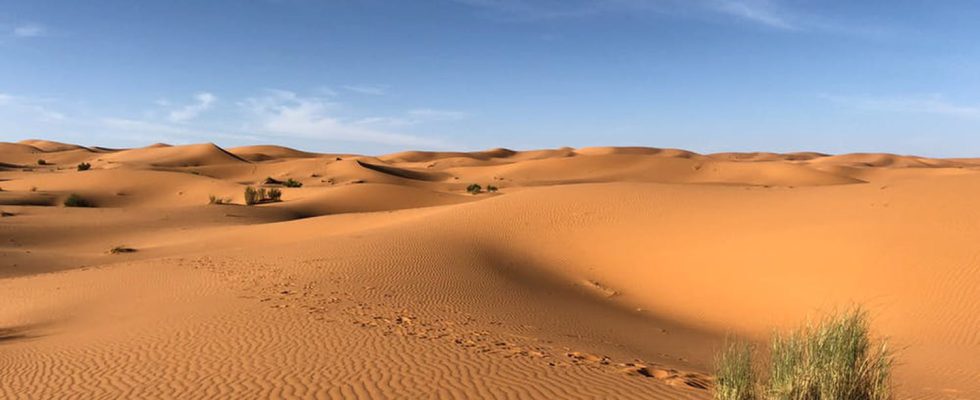The sandstorm that arrives in France comes from the Sahara desert. But do you know what hides under this sand in the desert? Many more things than you think!
You’ve probably walked on the beach or on a dune and wondered, “What if I kept digging?” This question has multiple answers because itWhat is found under the sand of the beach differs greatly from what lies under the sand of the desert.
Sand, whether in the dunes or near the sea, comes from rocks. Over thousands or even millions of years, erosion processes reduce rocks to grains that we commonly call sand. On the beach, the constant movement of the sea contributes to this cycle of erosion. If you dig deep enough, you might come across sandstone, a sedimentary rock formed when the sand is under enormous pressure. What if you dig even deeper? You will reach the bedrock, the base layer of the earth’s crust.
However, deserts are a different story. Contrary to what one might think, most deserts are not vast expanses of sand, but rather bedrock that is flush with the surface. The little sand present is the result of the erosion of this rocky bed, subjected to extreme temperature variations which cause it to expand and crack. These rocks are then eroded to become sand over a long period, often by the action of strong winds.
In fact, sand dunes, especially shifting ones, can cover entire forests and act as preservatives for what they bury, like the “camel thorn” trees found in Namibia. One of the most fascinating discoveries in this context took place in 2010: a prehistoric mega-lake under the sands of the Sahara desert was revealed by scientists. It is thought to have formed around 250,000 years ago, following the overflow of the Nile in the region, challenging the idea that deserts are monotonous and arid landscapes.
So if you get lost in the desert, digging for an exit is not the solution 🙂 …unless you want to discover the last strata of geological history!
